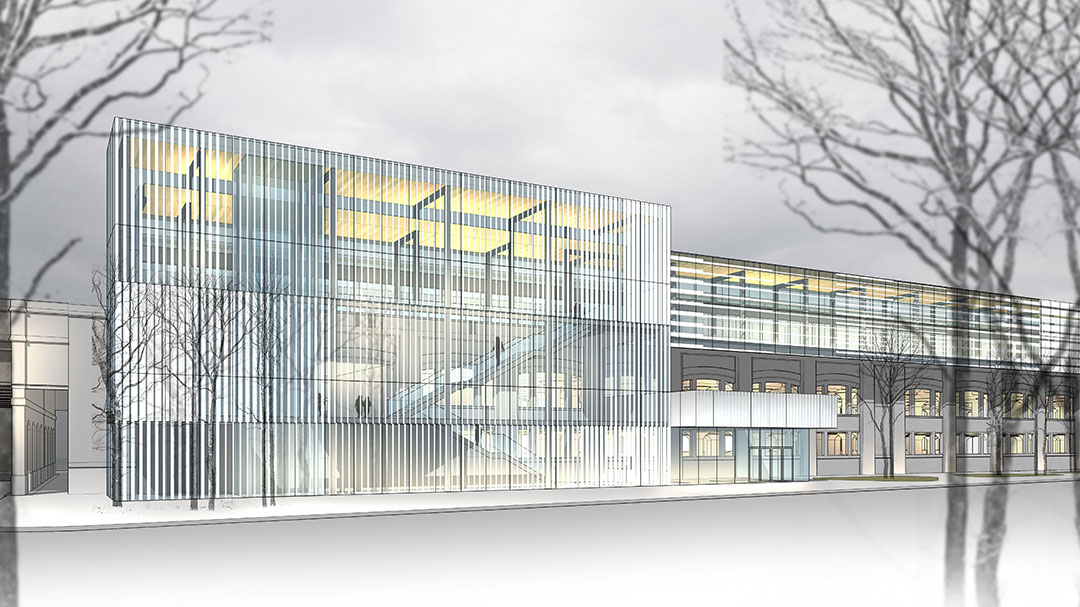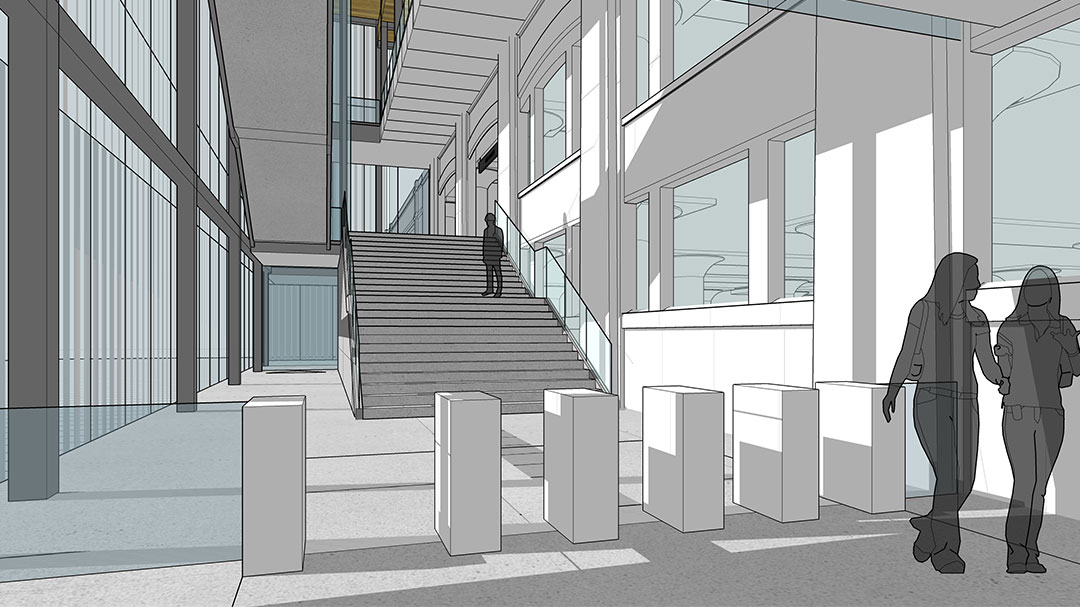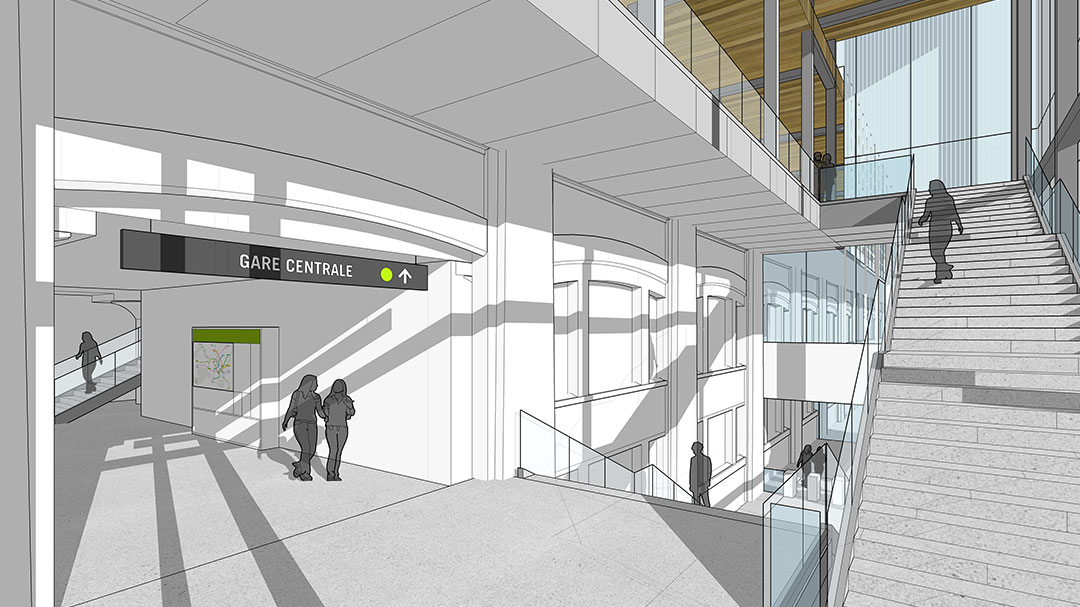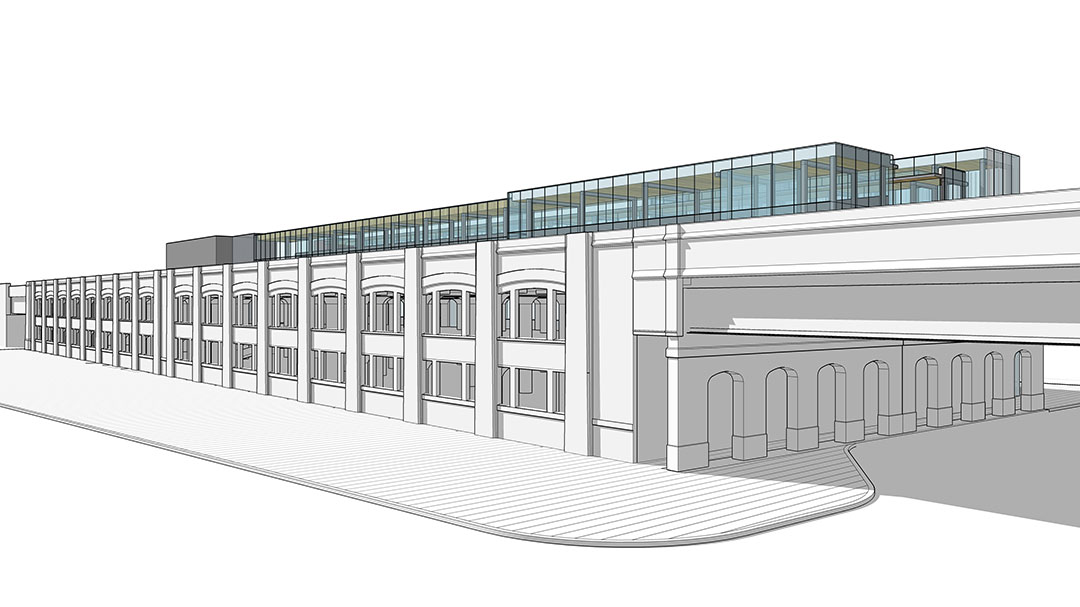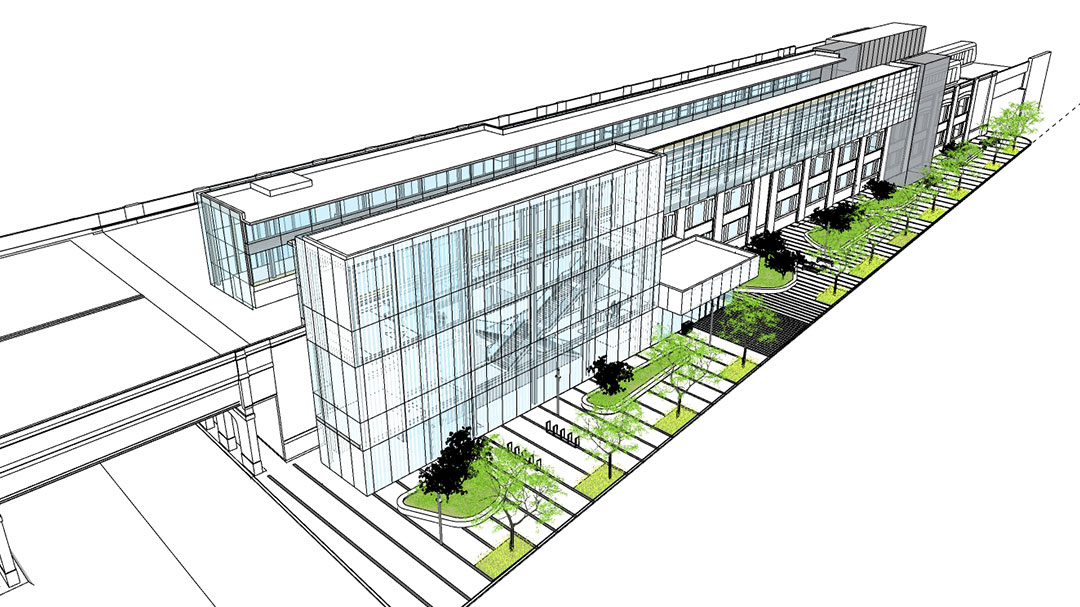Griffintown–Bernard-Landry station unveiled
The City of Montréal and CDPQ Infra today unveiled the location and architectural renderings of the Griffintown–Bernard-Landry station. Here are 5 things to remember about this future station.
1 – Location
Located in Griffintown, between Ottawa and William streets, the station will be integrated into the Viaduc Sud, or “southbound overpass,” a structure that functions as a building supporting a rail bridge entering Central Station from the south. This location will provide good access to the Griffintown area – both its southwest sector and the Cité du Multimédia – and the west end of Old Montreal.
The entrance to the station will be on Dalhousie Street.
View
the interactive map for the exact location.
2 – Architecture
With its glass building and wood ceiling, the Griffintown–Bernard-Landry station will reflect
the REM project's architectural principles. The design of this station will also be inspired by movement, with horizontal and vertical lines blending into the structure of the southbound overpass.
Architectural rendering of the station showing the wooden ceilings and the use of glass. View from Dalhousie Street.
Once in the station, users will be able to go up to the mezzanine level and then head to the platform of their choice (northbound or southbound) on the upper level. The station will be equipped with stairs and elevators.
View from the station entrance.
View from the mezzanine level. Platforms will be on the upper level.
3 – Integration
The station is integrated into the elevated railway structure known as Viaduc Sud, or “southbound overpass.” This sturdy structure linking Victoria Bridge and Central Station reflects the neighbourhood’s industrial history. It was built by Canadian National in two phases between 1931 and 1943. Upgraded as part of the REM project, the overpass provides an outstanding location for the Griffintown–Bernard-Landry station. The advent of the REM will revitalize the structure and prolong its useful life.
Rendering of the Griffintown–Bernard-Landy station, seen from Nazareth Street (or Robert-Bourassa Street). Integration into the southbound overpass is clearly visible.
Rendering of the Griffintown–Bernard-Landy station, seen from Dalhousie Street. The station entrance is shown.
Two parks, Parc Bonaventure and the future Parc Mary-Griffin, will be in the station's immediate vicinity. Other major points of interest will lie within a few minutes’ walk.
Walking time
- New City Gas: less than a minute
- Fonderie Darling: 2-3 minutes
- ÉTS: 5-6 minutes
- Tour d’Aiguillage / Lachine Canal: 7-8 minutes
- Promenade du Vieux-Port (rue de la Commune): 7-8 minutes
4 – Name
In the planning phase, this REM station was known as “Bassin Peel.” With its location now confirmed, the name has been changed to “Griffintown–Bernard-Landry.”
In addition to observing the principle of geolocation in the
toponymy of the Griffintown station, the City of Montréal wished to honour the former Premier Bernard Landry’s contribution to the development of the Cité du multimédia, which will be served by this station.
5 – Opening
Preparatory work has already begun and construction will continue over the next few years to ensure that the station will be open by the end of 2023 (by the time the REM enters full service).
Travel time from other REM stations
- Central Station: 2 min
- McGill station: 3 min
- Édouard-Montpetit station: 6 min
- YUL-Aéroport-Montréal-Trudeau station: 27 min
;Composite=(type=URL,url=https://images.radio-canada.ca/v1/assets/elements/16x9/outdated-content-2020.png),gravity=SouthEast,placement=Over,location=(0,0),scale=1)





;Composite=(type=URL,url=https://images.radio-canada.ca/v1/assets/elements/16x9/outdated-content-2020.png),gravity=SouthEast,placement=Over,location=(0,0),scale=1)
